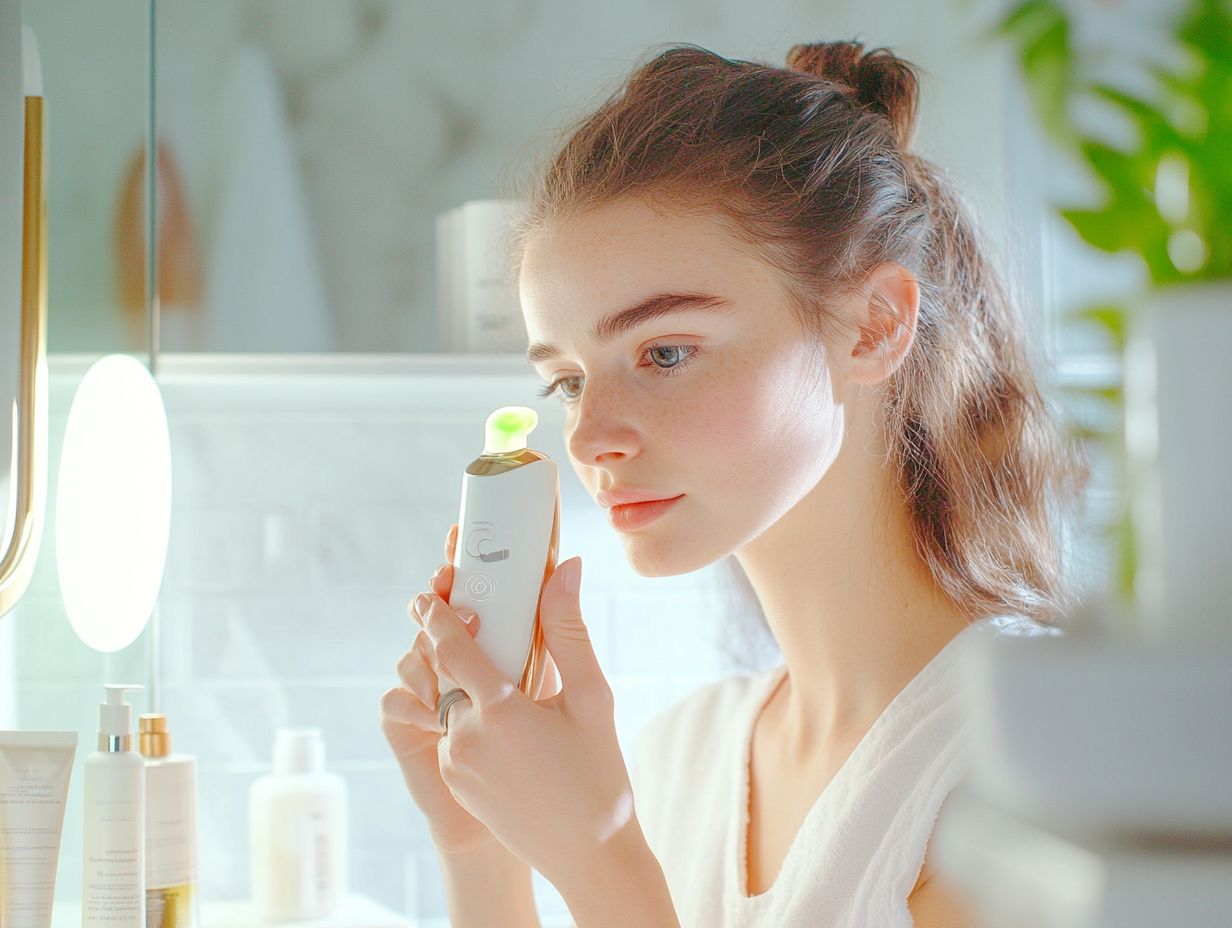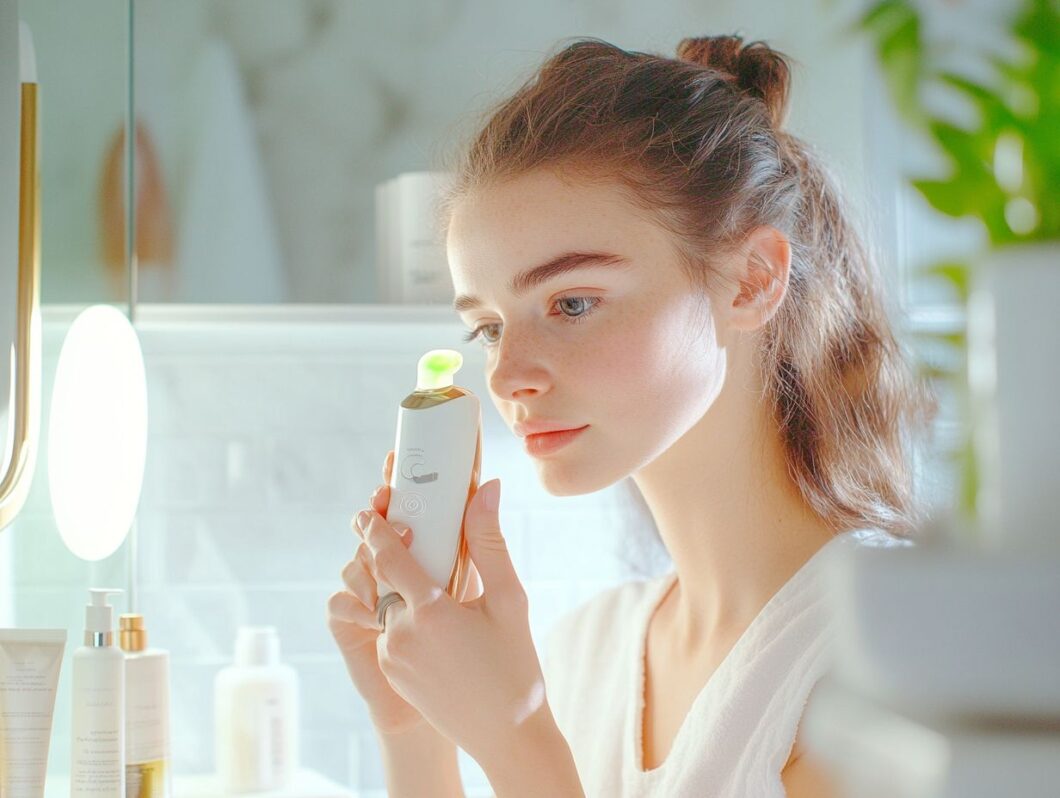In recent years, I have observed a significant surge in the popularity of at-home skin devices, which have effectively transformed personal skincare routines and made advanced treatments accessible to a wider audience.
From LED masks to microdermabrasion tools, these devices offer both convenience and efficacy. In this article, I will explore the reasons behind their increasing use, delve into the various types available, and examine their effectiveness as supported by research. Additionally, I will address safety concerns and provide guidance on selecting and maintaining the right device for your skin.
Join me in discovering how to elevate your skincare routine with the right tools.
Key Takeaways:
The Popularity of At-Home Skin Devices

The rise in popularity of at-home skin devices can be attributed to several factors, notably the growing consumer demand for convenience and the pursuit of cost-effective skincare solutions that deliver immediate results.
These advancements in home beauty devices address a range of dermatologic conditions, including hair removal, acne vulgaris, and signs of skin aging. As a result, skincare routines have become more accessible and tailored for individuals seeking effective treatment options.
Reasons for the Increase in Use
The rise in the use of at-home skin devices can be largely attributed to my observation of increasing consumer demand for accessible skincare solutions, alongside advancements in technology that enhance both device efficacy and safety.
I have noticed that consumers are actively seeking reliable information about the products they use, and this shift towards education has opened opportunities for brands to build trust through transparent marketing practices.
Companies that engage in sharing clinical trial results and relatable testimonials can significantly sway purchasing decisions, instilling confidence in potential users regarding the effectiveness of these devices.
Employing positive marketing strategies that emphasize real results fosters a sense of community among users, which strengthens brand loyalty and guides consumers toward making informed choices in their skincare routines.
Types of At-Home Skin Devices
At-home skin devices incorporate a wide array of technologies aimed at addressing various skin conditions.
These include:
- intense pulsed light for hair removal,
- laser diodes for skin rejuvenation,
- radiofrequency technology for skin tightening,
- light-emitting diodes specifically designed for the treatment of acne vulgaris.
Overview and Functions

The functionality of at-home skin devices varies significantly based on the technology used. For example, I can utilize intense pulsed light for effective hair removal, laser diodes for targeted skin treatments, radiofrequency to enhance skin elasticity, and light-emitting diodes to treat acne vulgaris.
These innovative devices are designed to address a range of skincare needs, each employing distinct mechanisms. For instance, I find that intense pulsed light (IPL) devices emit multiple wavelengths of light that penetrate the skin, effectively targeting melanin and disrupting hair growth cycles.
In contrast, laser diodes focus on specific skin conditions, using precise wavelengths to minimize blemishes and even out skin tone, making them ideal for addressing issues like pigmentation or fine lines.
Radiofrequency devices leverage heat energy to stimulate collagen production, which improves skin firmness and reduces sagging over time. Light-emitting diodes (LED) offer a gentler treatment option, utilizing blue and red light to target acne-causing bacteria and promote healing, making them particularly suitable for individuals with acne-prone skin.
By understanding how each technology operates, I can select the most appropriate device for my individual skin concerns, ultimately enhancing my skincare routine.
The Effectiveness of At-Home Skin Devices
I have found that the effectiveness of at-home skin devices is well-supported by numerous clinical trials and systematic reviews.
These studies demonstrate their efficacy and safety in addressing a variety of skin conditions, including psoriasis, wrinkles, and androgenic alopecia.
Research and Evidence
I have observed a growing body of research supporting the use of at-home skin devices, with numerous clinical trials and case series providing evidence-based conclusions about their effectiveness in treating various dermatologic conditions.
As healthcare professionals increasingly recognize the vital role of patient engagement in skincare, these devices are becoming integral to a comprehensive treatment plan rather than mere tools. For example, a recent study published in a respected dermatology journal indicated that patients using LED masks experienced a statistically significant reduction in acne lesions compared to those relying solely on traditional topical treatments.
These findings underscore how convenient at-home devices can effectively complement dermatological protocols, ultimately improving patient outcomes.
The accessibility of these devices also promotes adherence to treatment regimens, aligning with evidence-based practices that emphasize the importance of consistency in managing skin health.
Safety Concerns and Risks

I recognize that safety concerns surrounding at-home skin devices are critical.
Adverse effects can result from improper usage or pre-existing skin conditions, making it essential to seek clinical recommendations and consultations through teledermatology services.
Potential Side Effects and Precautions
While I recognize the numerous benefits that at-home skin devices offer, I must also acknowledge the potential side effects, such as skin irritation, burns, or allergic reactions. It is essential to adhere to clinical recommendations for their safe use.
I understand that these devices can sometimes lead to unforeseen complications, particularly for individuals with sensitive skin or pre-existing conditions if not used correctly. I always recommend conducting a patch test before full application to gauge the skin’s response. Following the specific instructions provided by manufacturers is crucial, as improper technique can exacerbate any issues.
Additionally, I believe that consulting with a dermatologist before starting any new treatment is a prudent step. This not only safeguards against unintended consequences but also enhances the overall effectiveness of the procedure, ensuring a safe and satisfying experience while minimizing adverse effects.
Choosing the Right At-Home Skin Device
When I select the appropriate at-home skin device, I consider several key factors. These include ensuring the products are FDA approved, understanding consumer expectations for both efficacy and safety, and evaluating the overall brand trust that is established through positive reviews and clinical endorsements.
Factors to Consider

When selecting at-home skin devices, I prioritize several key factors, including ensuring that the products are FDA approved, meeting consumer expectations for safety, and evaluating the brand trust established through product reviews.
These elements are essential in enhancing the user experience while minimizing risks associated with improper usage. FDA approval indicates that the devices have undergone rigorous testing to meet safety standards, which is critical as it directly impacts skin health and can help prevent the aggravation of existing dermatologic conditions.
Understanding consumer expectations regarding safety guides me toward reliable products, fostering confidence in my skincare routine. Additionally, positive product reviews serve as testimonials, reassuring me about the efficacy and performance of these devices, influencing my purchasing decisions, and encouraging broader acceptance of at-home skincare technologies.
Tips for Proper Use and Maintenance
I recognize that proper use and maintenance of at-home skin devices are crucial for maximizing their effectiveness and ensuring the longevity of the equipment.
This attention to detail significantly contributes to an efficient skincare ecosystem that aligns with my individual treatment regimens.
Maximizing Effectiveness and Longevity
To maximize the effectiveness and longevity of at-home skin devices, I regularly consult educational resources and adhere to best practices for device care and usage.
This involves understanding the recommended frequency of use, the appropriate settings tailored for different skin types, and ensuring that I clean all devices properly before each session. Maintaining a consistent skincare routine that complements the use of these devices significantly enhances the results I achieve.
Additionally, I am mindful of the specific manufacturer’s guidelines to prevent any potential damage and ensure safe usage of the device. By following these practices, I can achieve optimal results and extend the lifespan of my at-home skincare technology.


